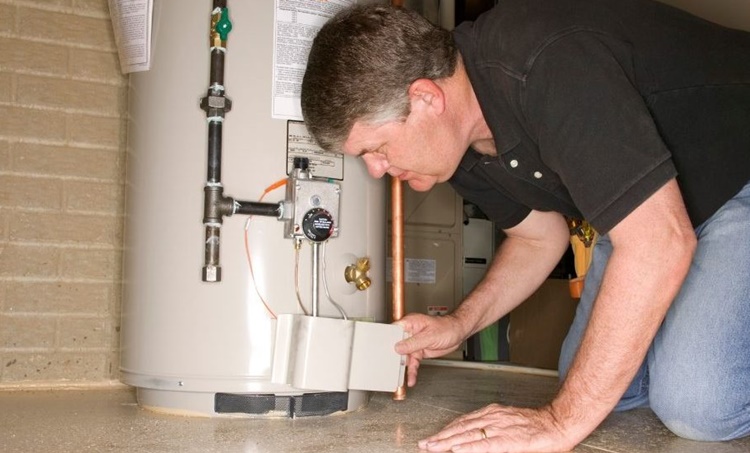Effective Methods to Care for Your Home's Hot Water System Successfully
Effective Methods to Care for Your Home's Hot Water System Successfully
Blog Article
They are making several good points about How to Maintain a Hot Water Heater in a Few Simple Steps as a whole in the article further down.

Warm water is crucial for everyday comfort, whether it's for a refreshing shower or cleaning meals. To guarantee your hot water system runs efficiently and lasts much longer, routine upkeep is vital. This short article offers practical pointers and understandings on just how to keep your home's warm water system to stay clear of disturbances and pricey fixings.
Intro
Keeping your home's warm water system could appear overwhelming, however with a few easy steps, you can guarantee it runs smoothly for many years to find. This guide covers everything from understanding your warm water system to do it yourself upkeep suggestions and understanding when to contact professional aid.
Significance of Keeping Your Warm Water System
Regular upkeep not just prolongs the life expectancy of your hot water system but additionally ensures it runs effectively. Neglecting upkeep can result in decreased performance, greater power expenses, and also premature failing of the system.
Indications Your Warm Water System Requirements Upkeep
Understanding when your hot water system requires attention can stop major concerns. Watch out for signs such as irregular water temperature level, strange sounds from the heating unit, or rustic water.
Recognizing Your Hot Water System
Prior to diving into maintenance jobs, it's useful to recognize the basic parts of your hot water system. Normally, this includes the hot water heater itself, pipelines, anode poles, and temperature level controls.
Monthly Upkeep Tasks
Regular monthly checks can help catch small issues before they intensify.
Purging the Hot Water Heater
Purging your hot water heater removes sediment buildup, enhancing effectiveness and lengthening its life.
Monitoring and Replacing Anode Rods
Anode poles stop deterioration inside the container. Inspecting and changing them when broken is crucial.
Evaluating and Readjusting Temperature Level Settings
Adjusting the temperature level setups makes sure optimum efficiency and safety and security.
DIY Tips for Maintenance
You can do a number of upkeep jobs yourself to keep your warm water system in leading problem.
Looking for Leakages
Regularly evaluate pipelines and links for leaks, as these can cause water damage and higher bills.
Evaluating Stress Alleviation Valves
Examining the stress safety valve ensures it functions appropriately and prevents extreme stress accumulation.
Shielding Pipes
Insulating warm water pipelines minimizes heat loss and can conserve power.
When to Call a Professional
While DIY upkeep is beneficial, some issues call for specialist knowledge.
Complicated Problems Calling For Expert Assistance
Instances consist of significant leakages, electrical issues, or if your water heater is constantly underperforming.
Routine Expert Maintenance Advantages
Specialist upkeep can consist of detailed assessments, tune-ups, and ensuring conformity with security standards.
Verdict
Normal maintenance of your home's hot water system is essential for efficiency, long life, and price financial savings. By complying with these suggestions and knowing when to seek specialist assistance, you can make sure a reliable supply of warm water without unforeseen interruptions.
How to Maintain an Instant Hot Water Heater
Before tinkering with your hot water heater, make sure that it’s not powered on. You also have to turn off the main circuit breaker and shut off the main gas line to prevent accidents. Also turn off the water valves connected to your unit to prevent water from flowing into and out of the appliance. 2. When you’re done, you have to detach the purge valves’ caps. These look like the letter “T†and are situated on either side of the water valves. Doing so will release any pressure that has accumulated inside the valves while at the same time avoid hot water from shooting out and burning your skin. 3. When the purge valves’ caps are removed, you have to connect your hosing lines to the valves. Your unit should have come with three hoses but if it didn’t, you can purchase these things from any hardware or home repair shops. You can also get them from retail stores that sell water heating systems. Read the user’s manual and follow it to complete this task properly. When the hosing lines are connected, open the purge port’s valves. 4. You should never use harsh chemical cleaners or solutions when cleaning your unit. Make use of white vinegar instead. It should be undiluted and you’ll probably use about 2 gallons. 5. Now flush your water heater. This task should probably take about 40 minutes. We can’t give you specific directions for this because the procedure is carried out depending on the type, model and brand of your heater. With that being said, refer to the user’s manual. 6. When you’re done draining the unit, you have to turn off the purge port valves again. Remove the hosing lines that you earlier installed on each of the water valves. Put the valve caps (purge port) back in their respective places and be very careful so as not to damage the rubber discs that are found inside these caps. 7. Now that everything’s back in place, check your user’s manual again to find out how to reactivate your water heating system. 8. Once it is working, turn one of your hot water faucets on just to let air pass through the heater’s water supply pipes. Leave the tap on until water flows smoothly out of it. https://www.orrplumbing.com/blog/2014/september/how-to-maintain-an-instant-hot-water-heater/

As a passionate person who reads about What Kind of Maintenance Do Water Heaters Need?, I think sharing that piece of content was worthwhile. You should set aside a second to distribute this post if you liked it. Thanks for your time spent reading it.
Click Here Report this page